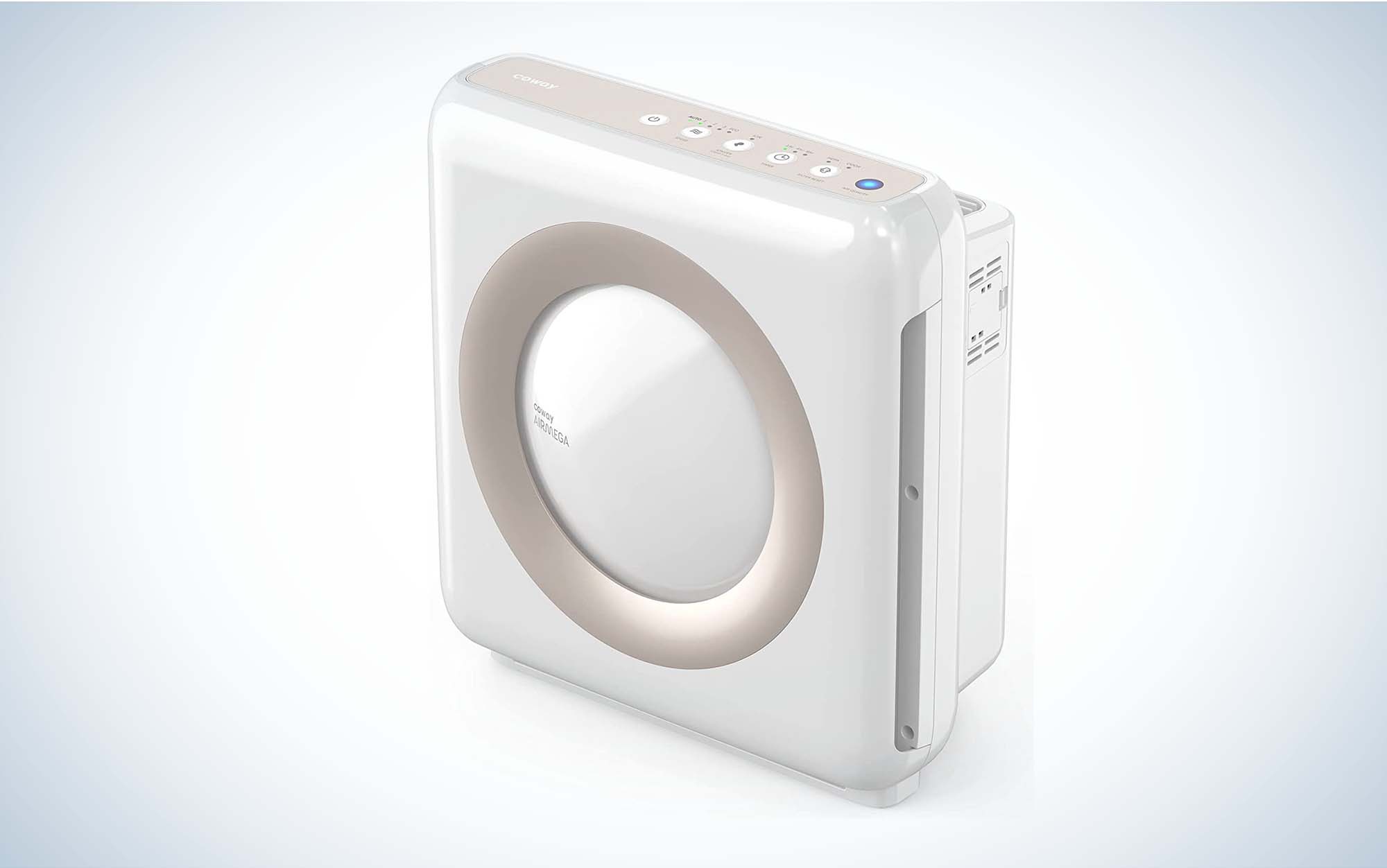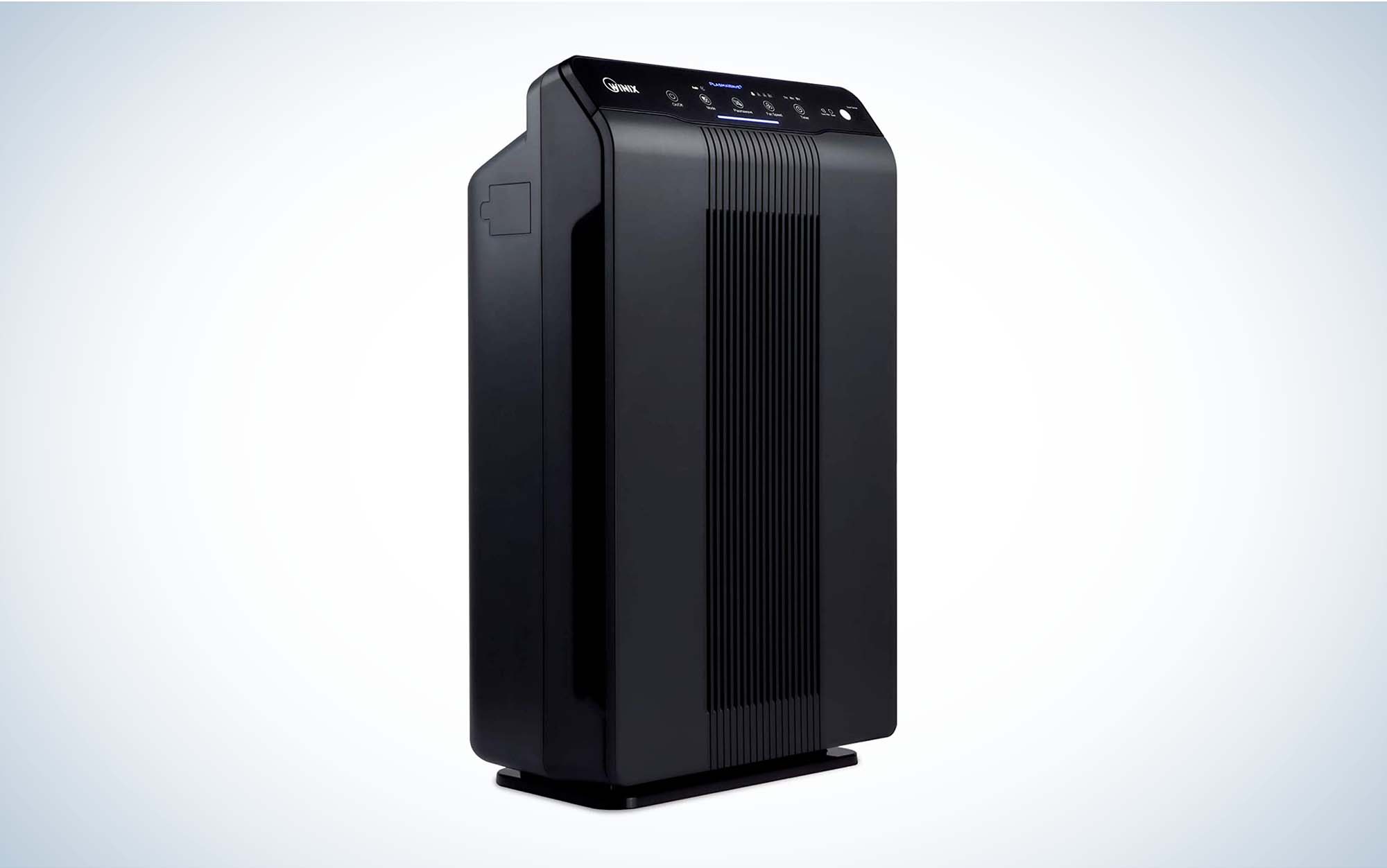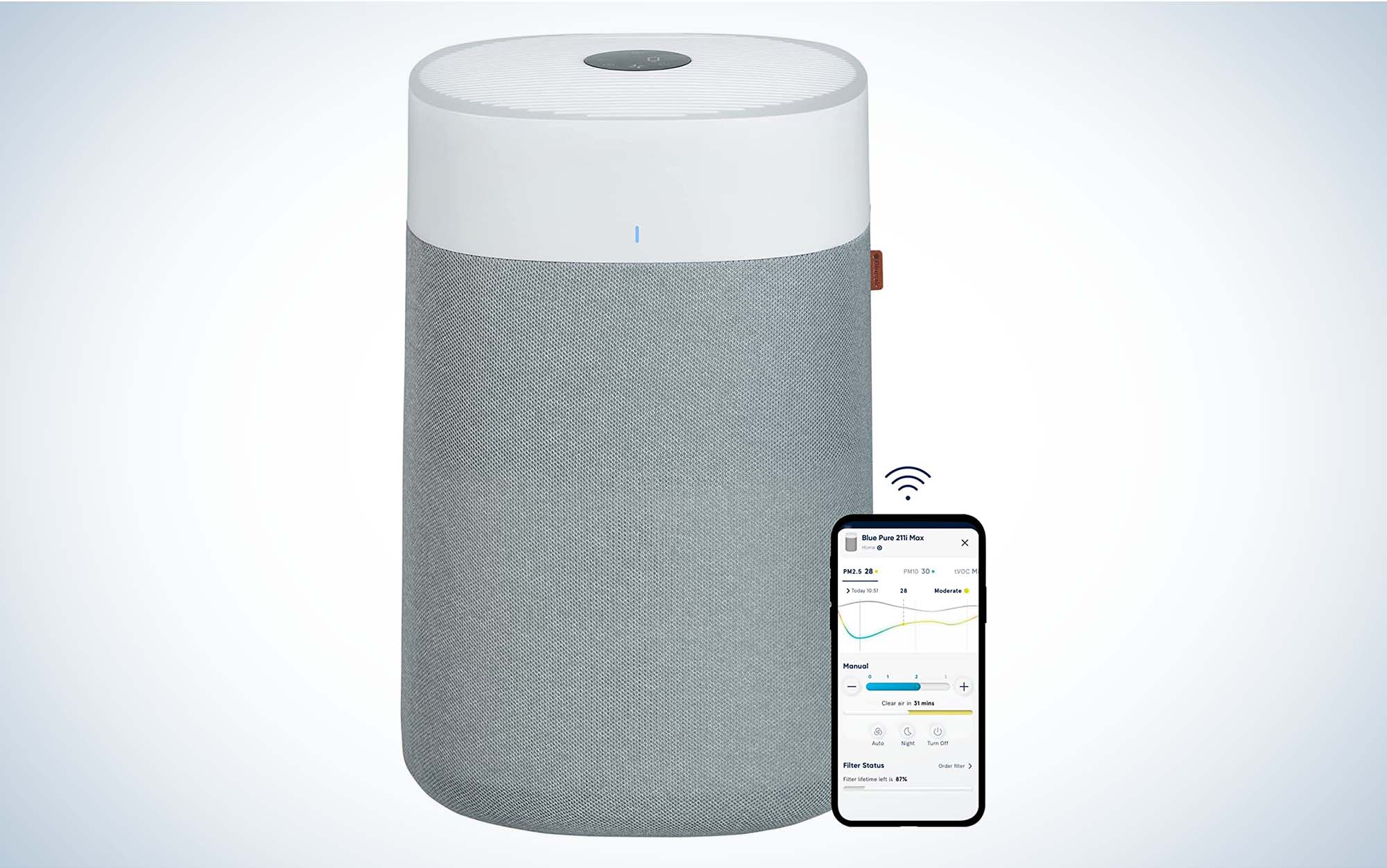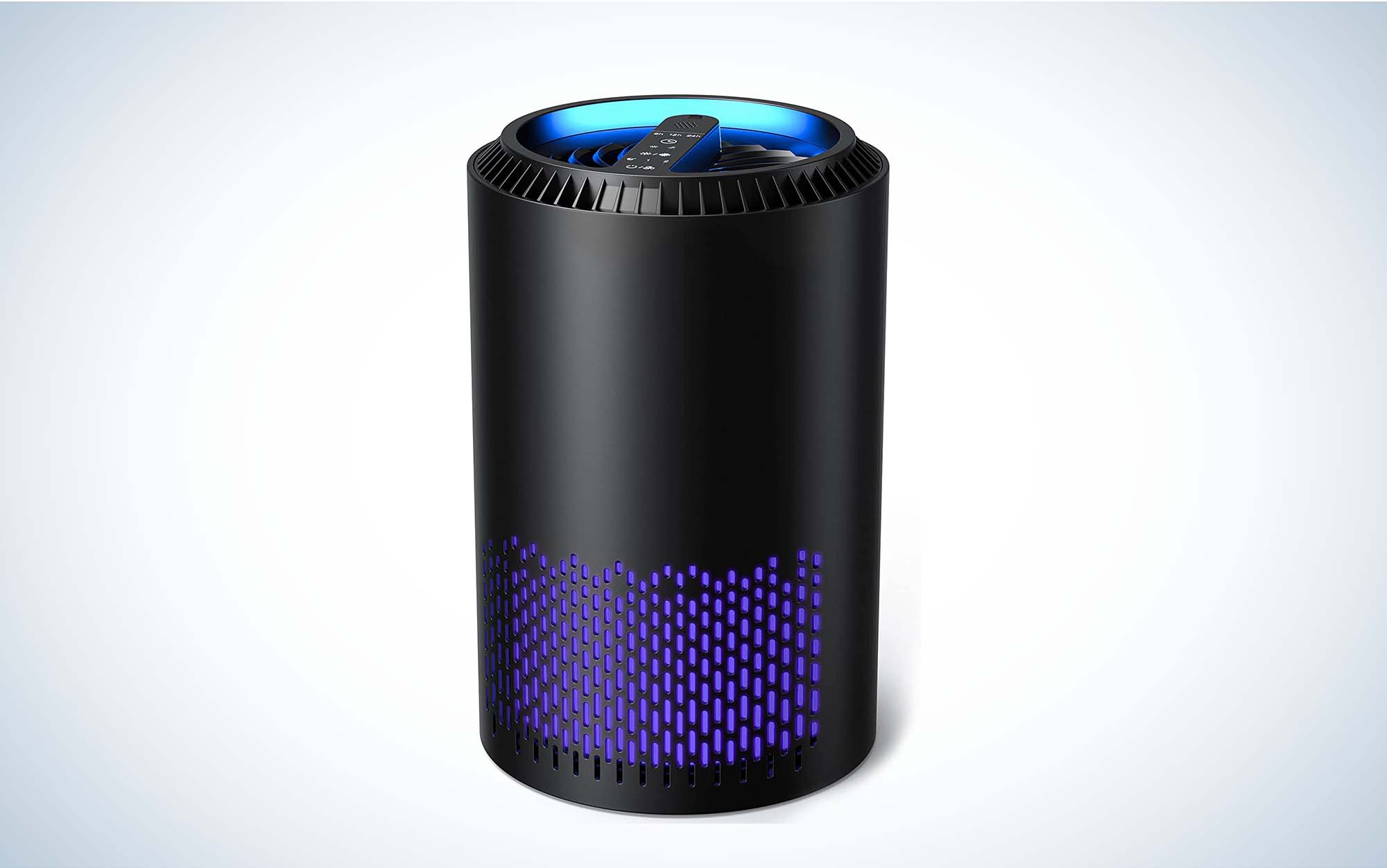We may earn revenue from the products available on this page and participate in affiliate programs. Learn More ›
Published May 26, 2023 4:00 PM
Every year wildfire smoke creeps farther and farther across the United States, exposing the importance of having an air purifier for smoke. While the casual smoke exposure of a campfire or outdoor barbecue typically won’t negatively affect your health, prolonged exposure to AQIs in the 100 range or higher can leave you coughing and wheezing, struggling to breathe with eyes stinging. Wildfire smoke can majorly impact human health for just about anyone, but children and senior citizens are particularly at risk. If you haven’t already purchased one of the best air purifiers for smoke, here’s a close look at some of the top options in this category.
Why Air Purifiers for Smoke Are Important
Laura Lancaster
I’ve been using air purifiers for smoke since September 2020, when outdoor quality levels in Seattle, where I live, oscillated between “very unhealthy” and “hazardous” for five days. My daughter was one year old at the time, and knowing the correlation between smoke inhalation and health outcomes (particularly asthma), I wasn’t taking any chances. Since then, we typically turn the air purifier on at night or when something burns on the stove, keeping a spare HEPA filter in the closet in case of another smoke event.
Two types of particulates typically get measured during smoke events: PM 2.5 and PM 10 (PM here stands for “particulate matter”). The numbers refer to the size of the smoke particles in micrometers, with PM 10 being 10 micrometers or shorter and PM 2.5s being 2.5 micrometers or shorter. According to the CDC, PM 10 are irritants for the eyes, nose, and throat (dust from the road and pet dander would fall into this category), white PM 2.5 is small enough to enter your bloodstream. According to the EPA, this can affect both your heart and lungs, increasing your risk of cardiac arrhythmias and heart attacks, asthma attacks, and bronchitis. Young children and the elderly tend to be the most at risk.
How I Tested the Best Air Purifiers for Smoke
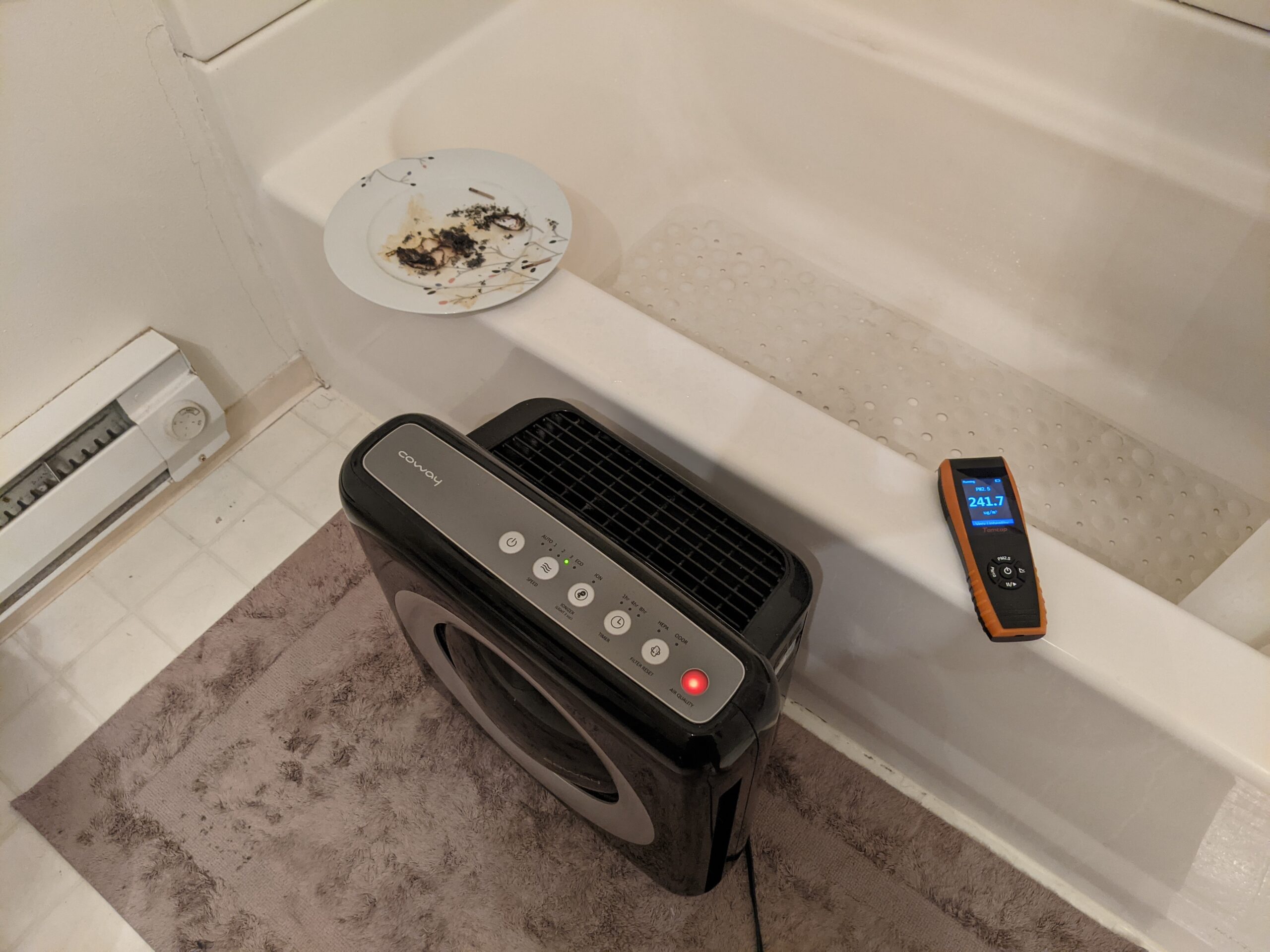
For this test, I focused on PM 2.5, knowing that increased PM 10 levels are strongly correlated with PM 2.5. To artificially create an environment with increased levels of 2.5, I went into an enclosed space (my bathroom) and burned a small amount of carbon material (a napkin). I used a Temtop Air Quality monitor to check how high PM 2.5 levels in the bathroom went, turning on the air purifiers once they were more than 250. I also tested for the IQ Air Atem in my car (a Toyota 4runner).
I recorded the time for the air purifiers to drop to below 50 PM 2.5, 10 PM 2.5, and then below 1 PM 2.5. For comparison, governmental guidelines suggest keeping 24-hour exposure levels below 35 PM 2.5, with a long-term (annual) target of 15 PM 2.5.
Read Next: Best Air Quality Monitors
The Best Air Purifiers for Smoke: Reviews & Recommendations
Best Overall: Coway Airmega AP-1512HH
Key Features
- Weight: 12.5 pounds
- Time to filter PM 2.5 from 50 to 10: 2 minutes
- Energy Usage (low to high): 7 to 64 watts
Pros
- Works well for bedrooms, but can pull double duty in living rooms if needed
- Handle on the top and lightweight enough to move around easily
- Indicator light turns red when particulate matter levels are too high
Cons
- Includes an air ionizer that can be detrimental to health if used
- Melodic tones whenever you press a button can be an issue with small children
The Coway Airmega is the first air purifier for smoke I purchased, and it’s still what I would recommend to most people. It’s aesthetically pleasing, quiet on all but its highest settings, and it was a top performer in filtering out PM 2.5 levels. It only took three minutes for it to cut PM 2.5 levels down from 570 to less than 50 in my test, and two more minutes to cut it down below 10. PM 2.5 levels were below 1 in only eight minutes total.

While this unit isn’t for large spaces, I’ve had it pull double-duty more than once, purifying the air of my entire 880-square-foot home. It usually needs to be cranked up to the highest setting to do this, but it gets the job done, and it’s not often that you’d need to purify the air throughout your home anyway.
I do have a few quibbles with the Coway Airmega. The first is that its indicator light is quite bright, causing a noticeable blue (when the air quality is good) glow in the room when the lights are off. It also includes an air ionizer, which is used to catch larger particles in the air. The only trouble is that this uses ozone, which is detrimental to human health in its own right. Finally, the melodic tones it sings whenever you change a setting or turn on the unit are extremely attractive to children—mine would run over to start mashing the buttons whenever I changed a setting.
Best for a Kid’s Bedroom: Winix 5500-2
Key Features
- Weight: 15.4 pounds
- Time to Filter PM 2.5 from 50 to 10: 2 minutes
- Energy Usage (low to high): 7 to 69 watts
Pros
- Performed as well as the Coway during testing
- Handle on the top and lightweight enough to move around easily
Cons
- Less aesthetically pleasing and slightly more obtrusive than the Coway
- Has cute melodic tones and a bright blue light (but less abrasive than the Coway)
For me, the Coway Airmega’s ionizer—coupled with my child’s love of pressing buttons—makes this one a no-go for her bedroom. Fortunately, during testing, a unit performed at the same level as the Coway and was a lot harder for her to mess with: the Winix. At the same time, it suffers from the same problems as the Coway (melodic tones that chime whenever you press a button, a bright light that gets covered with a cloth at nighttime, an ionizer that produces a small amount of ozone (although not so much as to be a health risk). The buttons were less distinct than the Coway’s, and the height and angle of the display didn’t as closely mimic the display of a typical child’s toy. It’s not perfect—a high-performing air purifier without the chirping and the ionizer would be ideal—but it ultimately caused fewer issues than the Coway.
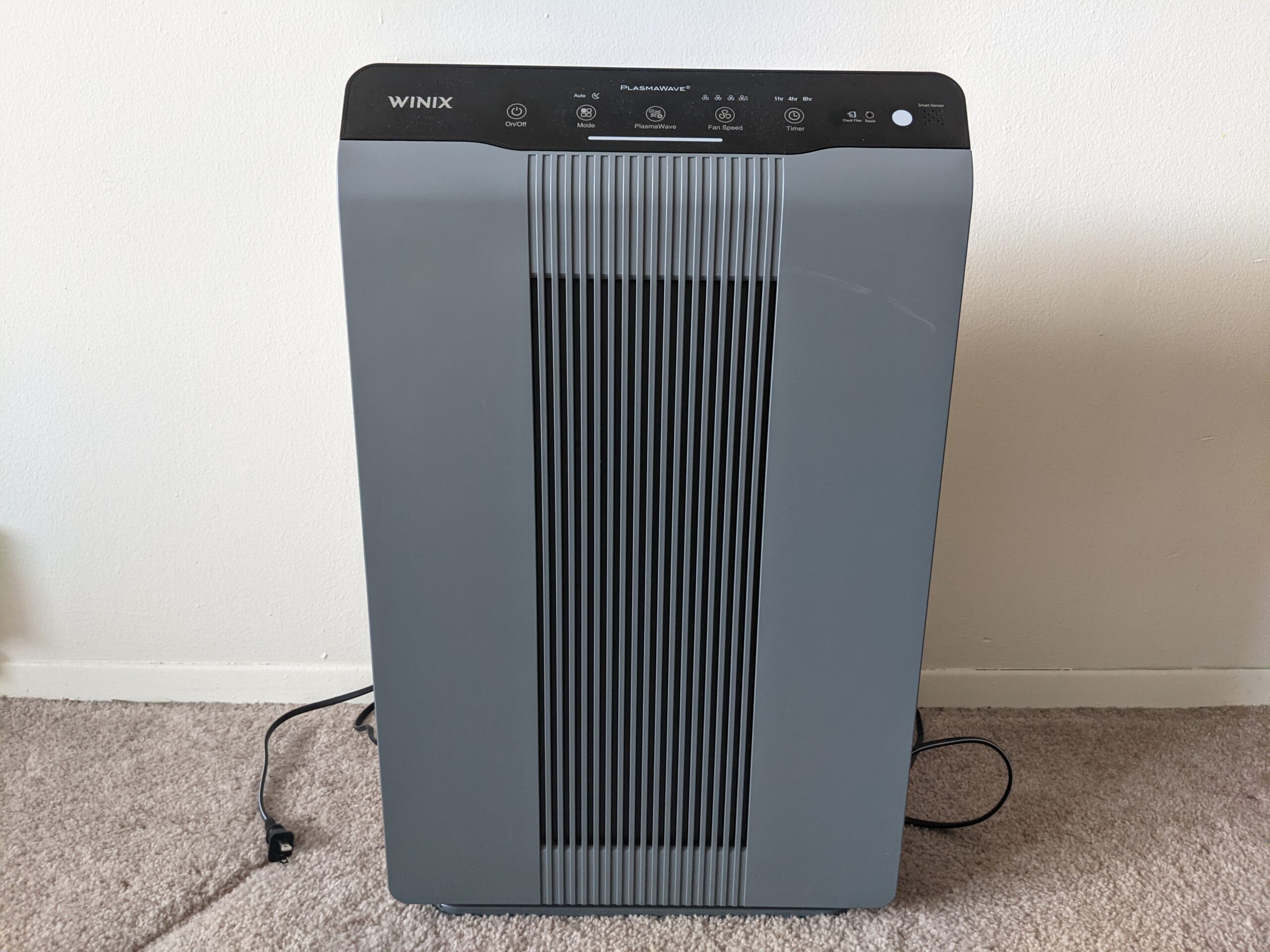
The only thing I didn’t like about the Winix is that it’s just big—taller and less attractive than the other best air purifiers for smoke I looked at. Keep this one tucked away in the corner of your child’s bedroom, set to the lowest setting, and only look at it when you need to change the filter.
Best for Large Rooms: Blueair Purifier Large Room
Key Features
- Weight: 13 pounds
- Time to Filter PM 2.5 from 50 to 10: 1 minute
- Energy Usage (low to high): 33 to 73 watts
Pros
- High performing during my test
- Aesthetically pleasing
- No music when you press a button
Cons
- Comparatively difficult to move
- Sensitive controls are easy to brush against
While the other top air purifiers in my test pulled in air from only one direction, the Blueair Purifier pulled it from every direction. That didn’t make a big difference in my test (in an enclosed space), but that would help in a larger room by increasing the volume of air it’s taking in. And the Blueair is actually nice enough looking, and quiet enough to do just that.
I also appreciated that its controls were comparatively simple, with just one button that didn’t try to sing me a lullaby whenever I touched it. Unfortunately, the button is also surprisingly sensitive. Time and again, I would find that the unit was either off or on high because my leg had brushed against it without my noticing.
The other downside to the Blueair is that it could be easier to move. Picking it up from the sides causes the top to come off; it must be picked up from the bottom.
Best for Cars: IQAir Atem
Key Features
- Weight: 6.3 pounds
- Time to Filter PM 2.5 from 50 to 10: N/A
- Energy Usage (low to high): 1 watt
Pros
- Easy to install
- Extremely quiet
Cons
- Did not purify air very well
- Difficult to adjust while driving
- Expensive
One of the biggest challenges with a smoke event is cabin fever—getting stuck inside your house while you wait for some wind or rain to clean the outdoor air can be taxing. So I was excited to try out the IQAir Atem, which is an air purifier specifically designed for your car. It attaches to the back of the driver or passenger seat headrest inside your vehicle and plugs into the car cigarette lighter. It’s also quiet—easily the quietest unit I tested of the lot.
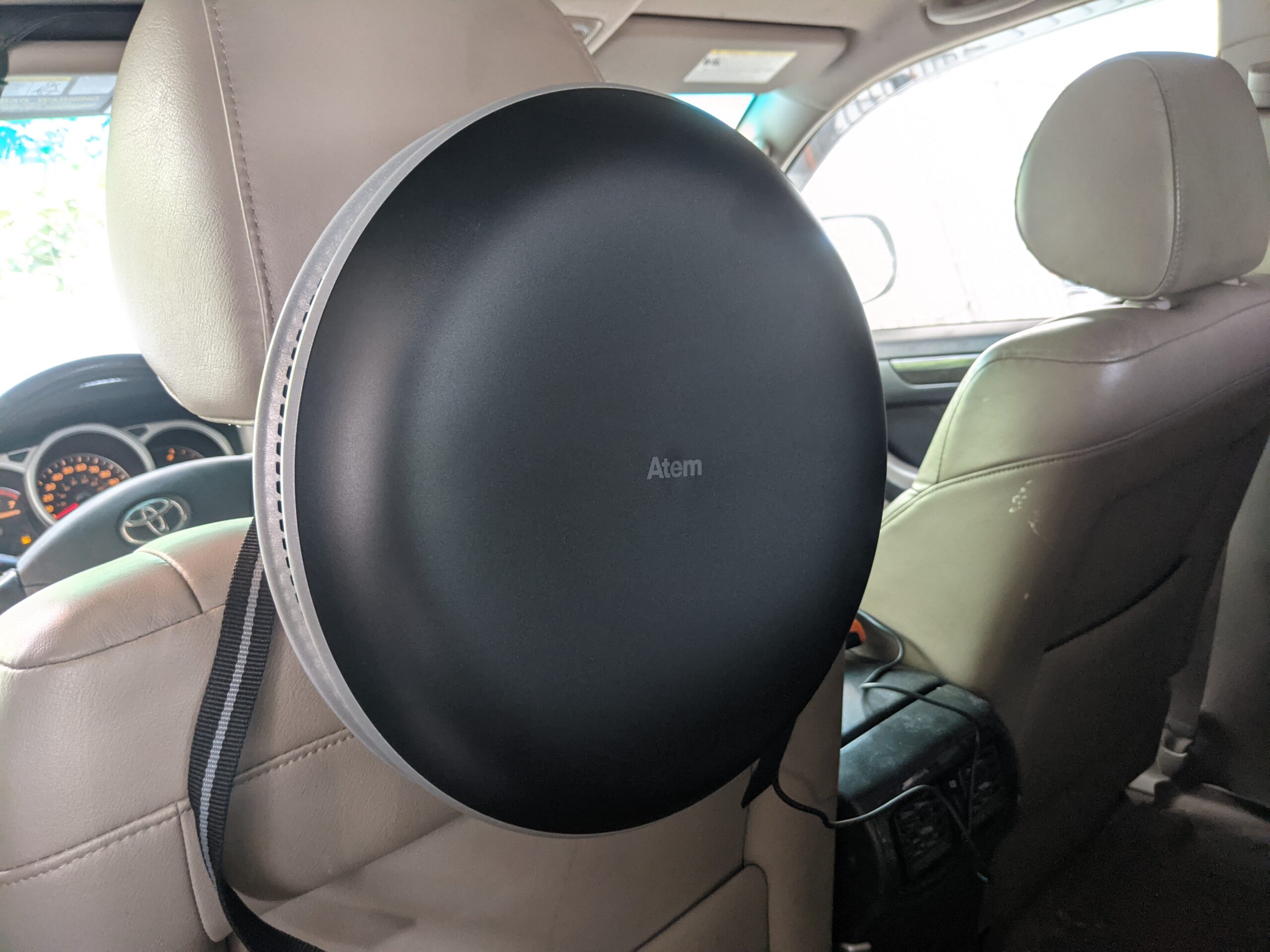
Unfortunately, it just didn’t work very well. Of course, the testing here looked a little different: burning a napkin had a more deleterious effect on air quality inside my car than in my bathroom. The PM 2.5 levels shot above 999, at which point I turned on my car’s fan to get the air moving and then turned it back down again a few minutes later when it started to drop below 900. Twenty minutes into testing, PM 2.5 levels were still at 140. It wasn’t doing nothing, but it was working so slowly that I would likely arrive at my destination before the air quality in my car improved. If you can purchase a HEPA filter for your existing cabin filter, that is almost certainly a better investment than this product.
Best Budget: AROEVE Air Purifier
Key Features
- Weight: 3 pounds
- Time to Filter PM 2.5 from 50 to 10: 8 minutes
- Energy Usage (low to high): 8 to 24 watts
Pros
- Affordable
- Low electricity usage
- Very small size
Cons
- Not as effective as larger, more expensive units
It can be hard to justify the price of an air purifier if you’re preparing for a possible smoke event rather than living through one currently. So I tried out the AROEVE, a budget brand that’s often available when more high-end units are out of stock, to see how it worked.
During my test of the AROEVE, the PM 2.5 level ended up shooting up to 820, the highest level during my main test. I took the air purifier about 8 minutes to get PM 2.5 levels below 250, and another nine minutes to get them below 50 again. Twenty-five minutes from the start of the test, PM 2.5 levels were below 10.
While not as impressive a performance as the Coway Airmega, Winix, or Blueair, this is a great unit to have on hand in the event an unexpected smoke event wafts in through the windows this summer.
Best Air Quality Monitor for Smoke: Airthings View Plus
Key Features
- Both battery and USB-C option
- Measures temperature, humidity, radon, PM 2.5, PM 1, CO2, and VOCs
- Connects to a smartphone app
Pros
- Extremely long battery life
- Ability to set up alerts for PM 2.5 levels
Cons
- Expensive
- Less intuitive user interface than my best overall pick
- Took the longest to note the change to PM 2.5 of anything in my test
The Airthings View Plus won top marks in my test of the best air quality monitors, thanks to the sheer number of pollutants it tracked and, importantly for air smoke events, its ability to set up alerts. The app for the Airthings air quality monitor provides detailed information on the exact levels of its various measurements. The actual device shows you two of the measurements at a time. You can customize this to show the ones you are the most interested in, including PM 2.5 and PM 1.
While you can plug this air quality monitor into the wall using a USB-C cord, it can also be powered via six AA batteries (which are included). When I received this air quality monitor in the mail about two months ago, I set it up (including the online app) and turned it on, but did not plug it in using the USB-C wall charger. It’s still going strong. I’m assuming the battery will eventually give out, but this is a great option if you’re looking for something cordless.
Things to Consider Before Buying an Air Purifier for Smoke
HEPA Filter
If an air purifier for smoke doesn’t have a HEPA filter, don’t even bother purchasing it. These are the only filters capable of filtering out the particle size that can cause the most damage to our cardiovascular and respiratory systems. In fact, if you can find a HEPA filter, but not an air purifier during a smoke event, many people have successfully lowered their PM 2.5 levels by simply taping the filter to a box fan and letting it run.
HEPA filters need to be changed on a periodic basis, so check the manufacturer instructions to determine when the best time to do this is. If a substantial smoke event hits, it’s a great idea to change your HEPA filter after that as well.
Square Footage
Typically people purchase an air purifier for smoke for their bedroom (and children’s bedrooms), and then a second one for their main living area. The ones in your bedroom can typically be smaller and less powerful than the ones in your main living area, as they circulate less air.
Energy Consumption
Air purifiers use a fairly substantial amount of energy, as much as 70 watts, during our testing. Keep an eye on the setting of your air purifier—the lower the setting you can get away with to achieve optimal air quality in your home, the lower your electricity bill will be.
FAQs
Q: How do air purifiers work?
Air purifiers work by pushing the air in your room through a HEPA filter to clean out PM 2.5 and PM 10 particles.
Q: How do I know if I need an air purifier?
If you live in an area that is at risk of being impacted by wildfire smoke, then you should have an air purifier for smoke.
Q: Are air purifiers worth getting?
Air purifiers are important to have on hand in case of poor air quality due to wildfire smoke, a problem that is becoming increasingly common across the United States.
Why Trust Outdoor Life?
Since 1898, OL has been a leading authority in testing and reviewing hunting gear, fishing tackle, guns, and shooting equipment, and much more. We have more than a century-long history of evaluating products, and we’re now bringing that expertise to online reviews. Our editors are experienced outdoorsmen and women, and most importantly, we’re trained journalists. We prioritize field testing and objective data when reviewing products. We conduct interviews with gear manufacturers and engineers as well as outdoor experts so that our readers have an understanding of how and why a product works—or doesn’t.
Advertising does not influence our gear reviews, and it never will. While we always focus our coverage on standout products—because we want our readers to be aware of the latest and greatest gear—we also cover the flaws and quirks of any given product.
Final Thoughts on the Best Air Purifiers for Smoke
Purchasing an air purifier for smoke provided my family with an important piece of mind during a stressful smoke event. Since then, we’ve had several other smoke events (although none as dramatic as the original) that have reinforced the importance of that decision and watched as friends and family members across the United States have experienced similar events. If you’ve been putting off purchasing an air purifier for smoke, now is a great time to do so, to protect your and your family’s health.

